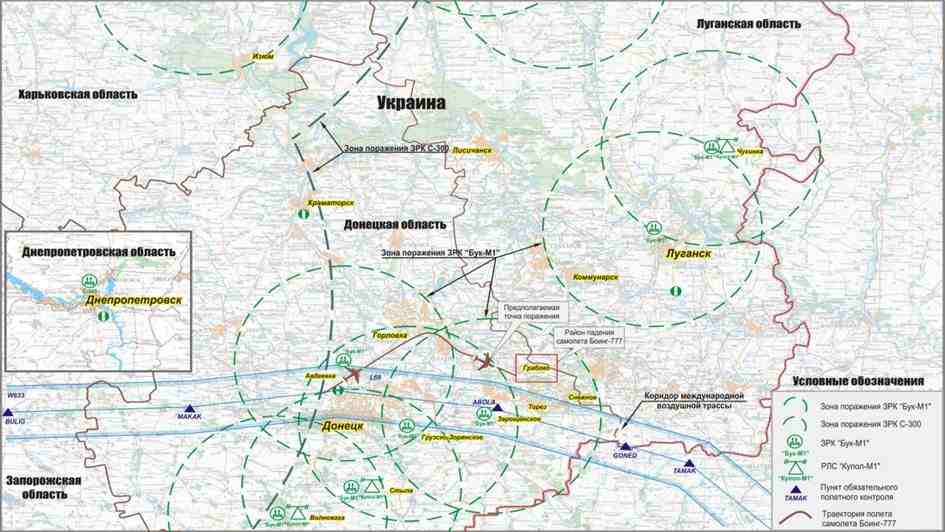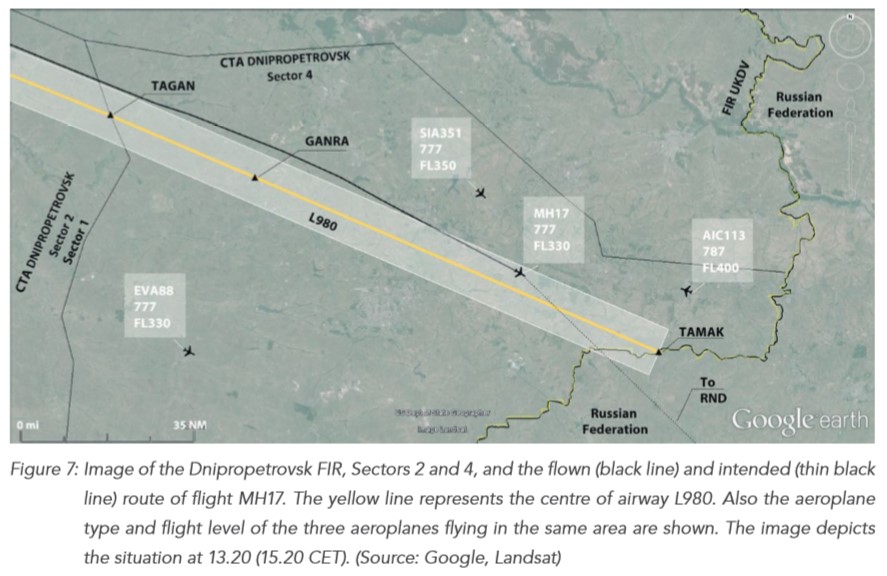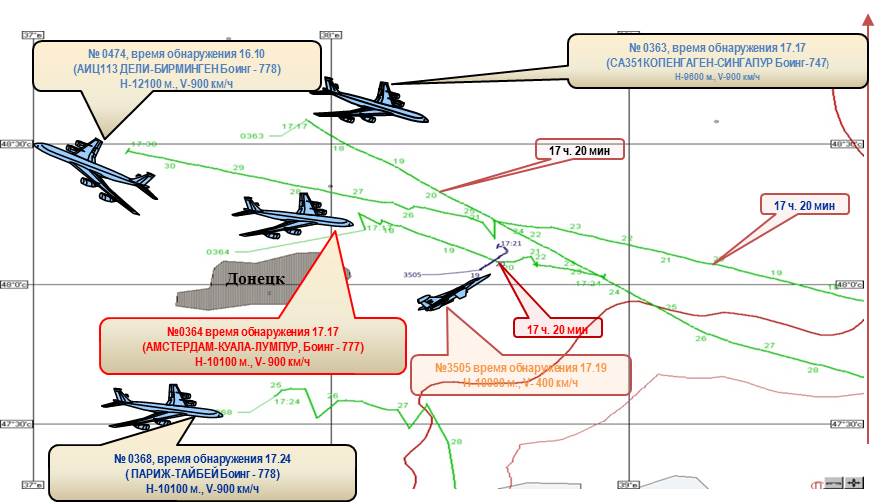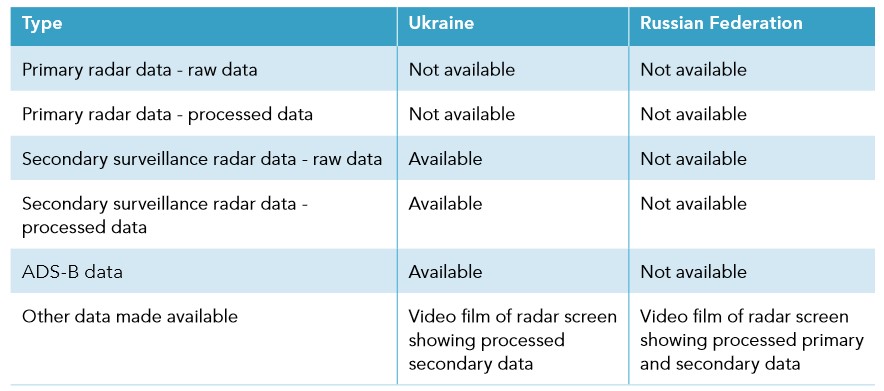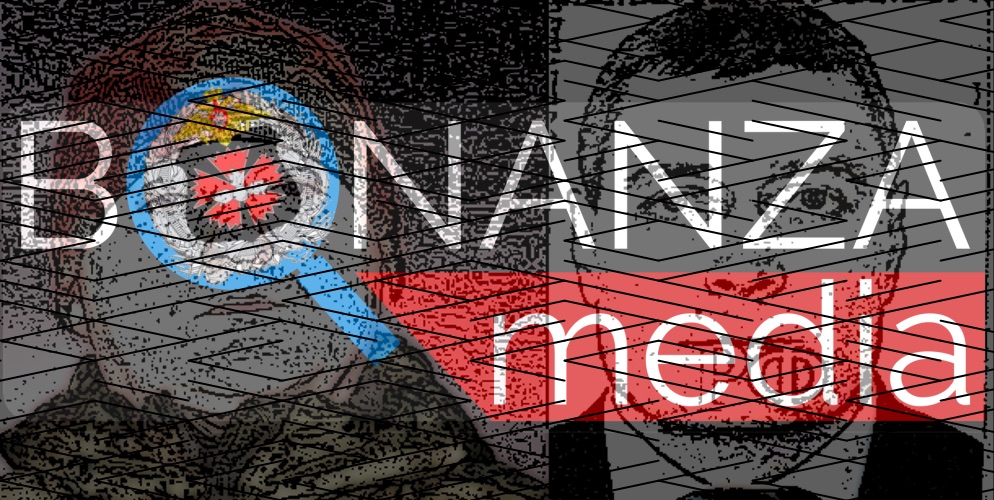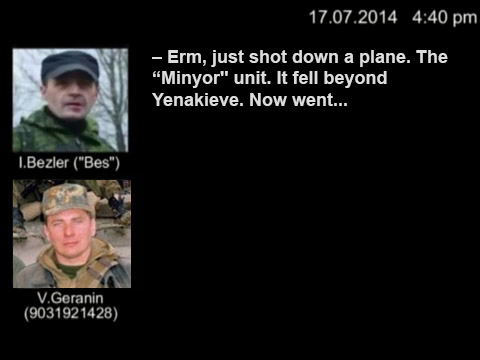How the Dutch Safety Board Proved Russia Faked MH17 Evidence
With the release of the Dutch Safety Board report into the downing of Flight MH17 it is now possible to compare the evidence gathered by the Dutch Safety Board with claims made by the Russian Ministry of Defence in their July 21st 2014 press conference on the downing of Flight MH17. In Bellingcat’s “Russia’s Colin Powell Moment – How the Russian Government’s MH17 Lies Were Exposed” four claims made by the Russian Ministry of Defence during the press conference were examined and shown to either be lies, fabrications, or both. While the Dutch Safety Board report does not cover all aspects of the Russian Ministry of Defence’s July 21st press conference it was still possible to compare the Dutch Safety Board’s conclusions to some of the claims made by the Russian Ministry of Defence.
MH17’s Flight Path
One of the Russian Ministry of Defence’s key claims was that MH17 had been redirected out of its flight corridor, making a significant turn clearly visible on the image they presented of MH17’s flight path, shown below:
Data from the preliminary Dutch Safety Board report published on September 9th 2014 showed that this claimed flight path was a fabrication, with the following comparison created by Bellingcat clearly showing the difference between the Russian Ministry of Defence claim and the Dutch Safety Board’s findings in their preliminary report:
The below map is from the final Dutch Safety Board report showing the route of Flight MH17, which confirms the route published in the preliminary Dutch Safety Board report:
This is final confirmation that the Russian Ministry of Defence presented a fake map of Flight MH17’s flight path in their July 21st 2014 press conference, and lied about the flight path during the press conference.
The Ukrainian SU-25 and Radar Data
The Russian Ministry of Defence presented the following image, which they claimed represented aircraft in the area at the time:
The Russian Ministry of Defence then stated the following:
At that time there were 3 civilian aircrafts:
Flight from Copenhagen to Singapore at 17.17;
Flight from Paris to Taipei at 17.24
Flight from Amsterdam to Kuala Lumpur. Besides it, Russian system of air control detected the Ukrainian Air Force aircraft, purposed Su-25, moving upwards toward to the Malaysian Boeing-777. The distance between aircrafts was 3-5 kilometers.
The Russian Ministry of Defence also presented a video of what it claimed was radar data showing aircraft in the sky at the time:
They then stated the following:
At 17.20 P.M. at the distance of 51 kilometers from the Russian Federation state boundary and the azimuth of 300 degrees the aircraft started to lose its speed obstructively which is quite distinctively to be seen on the table of the aircraft characteristics. At 17.21 35 seconds P.M. with the aircraft speed of 200 km/h at the point of the Boeing crash there is a new mark of the aircraft to be seen. The aircraft was steadily monitored by radar stations of Ust-Donetsk and Butirinskoe during 4 minutes period. Air control officer having enquired the characteristics of newly appeared aircraft couldn’t possibly get them because it is in all likelihood that the aircraft had no secondary deduction system amounted on it, which is put typically for military aircraft. The early detection of this aircraft appeared to be quite impossible because the air situation control is usually performed by radars working in a standby mode which detection possibilities at the given distance are over 5000 m altitude.
As part of the Dutch Safety Board investigation radar data was requested from Ukraine and Russia, with the results of the requests detailed in section 2.9.5 of the report:
Russia was unable to provide any of their raw or process data, only providing a video of the radar screen showing what they claimed was processed primary and secondary data. The Dutch Safety Board states in section 2.9.5.3
Russia claims its data retention policies resulted in the data not being stored, and this is examined in detail in section 2.9.5.3 of the report. Regardless of regulations, and whether or not Russian followed them, it seems extremely odd that a few days after the downing of Flight MH17 Russian would use this data as part of its MH17 press conference, but not save a copy of the data for the Dutch Safety Board investigation, or the criminal investigation.
However, based on the information presented by Ukraine and Russia the Dutch Safety Board was able to come to a conclusion about other aircraft in the air at the time MH17 was shot down. In section 3.4.2 it referenced the second object that appeared on the radar, identified as an aircraft by the Russian Ministry of Defence:
The Dutch Safety Board made the following conclusions on the presence of other aeroplanes near Flight MH17 in section 10.2:
In conclusion, it is clear to see that the claims of the Russian Ministry of Defence of an SU-25, or other military jet, close to MH17 were totally false, and they purposely misread radar data (also examined by other experts who came to the same conclusion as the Dutch Safety Board) to support their false claim a military jet was near to Flight MH17.
In addition to the above claims made by the Russian Ministry of Defence in their July 21st press conference it has been previously possible to prove the Russian Ministry of Defence lied about three other key claims, detailed here. It is now clearer than ever that the Russian Ministry of Defence’s reaction to the downing of Flight MH17 was to create lies and fabrications and present them to the world, only days after Flight MH17 was shot down, killing 298 people.
